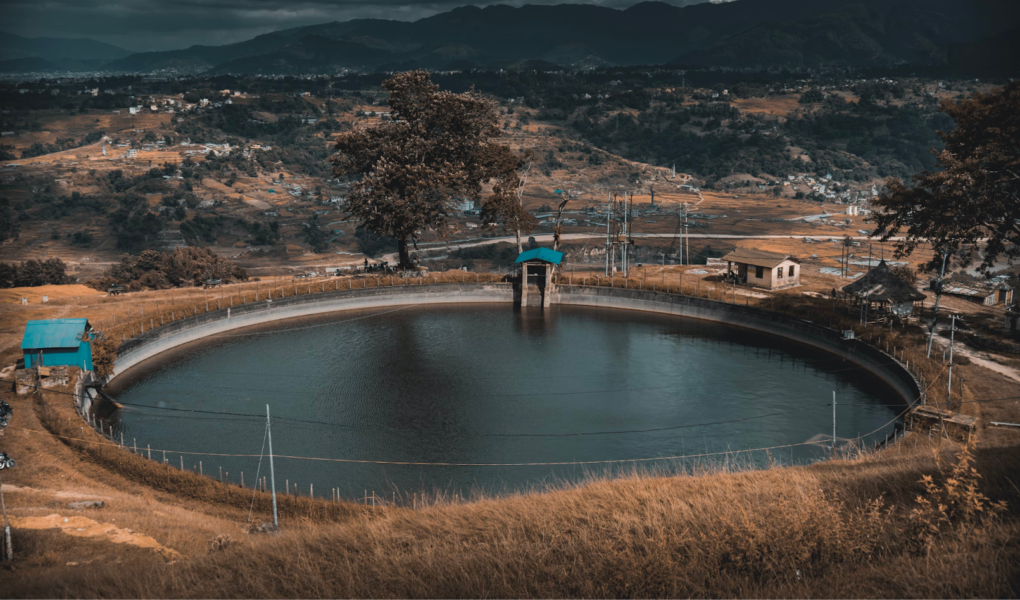Although water covers about 70 percent of the Earth’s surface, only three percent of that water is fresh and potentially drinkable. Even among this freshwater, only one-third is available for human use in liquid form, with the rest being frozen in glaciers or otherwise unusable. Given this scarcity of water, it is unfortunate but unsurprising that roughly 1.1 billion people around the world do not enjoy the benefits of a stable water supply.
The world’s water scarcity problem will likely worsen in coming years as human activities strain already-limited water supplies. Agriculture accounts for roughly 70 percent of freshwater use worldwide, with much of this water being wasted to evaporation and leaks in the irrigation system. Modern agriculture often involves the withdrawal of freshwater from underground aquifers, which is already leading to the depletion of major reservoirs like the Ogallala Aquifer in the Central United States and the Nubian Aquifer System in Northeast Africa.
Population growth in urban areas has also caused water supplies to dwindle as cities continue to pump freshwater in order to feed, clothe, and house their residents. In addition, residential, industrial, and agricultural pollution has degraded the quality of otherwise usable freshwater supplies, thereby exacerbating water shortages around the world.
Consequences of the Water Shortage
Access to clean freshwater is essential to maintaining a healthy lifestyle for people around the world. Water is necessary for drinking, sanitation, agriculture, and other activities that sustain human populations. However, unsustainable water use and extreme weather events have jeopardized water supplies, thereby exposing millions of people to the hazardous effects of water scarcity.
Food insecurity is one of the most urgent consequences of water shortages, especially in countries and regions experiencing severe droughts. For example, in early 2021, extremely dry conditions in the Horn of Africa caused 13 million residents of the region to suffer from food insecurity. Intense and chronic droughts had led to poor crop harvests and the decimation of livestock, causing food prices to dramatically rise. Countless families in the region struggled to afford food and found themselves on the brink of famine.
Clean water and sanitation services will become more difficult to provide as water supplies diminish. Currently, about 1.1 billion people around the world lack access to clean freshwater, and this number may grow if water supplies are further strained. Water-borne illnesses like cholera can spread across populations that are unable to use clean water for essential activities like drinking, sanitation, or personal hygiene.
In addition, as groundwater becomes more scarce, it will likely become more expensive and of lower quality. The overuse of aquifers leads to the lowering of their water tables, making it more expensive to extract groundwater from deeper beneath the surface. As water costs rise, more people around the world may be deprived of access to clean freshwater. In coastal areas, the depletion of aquifers often causes saltwater to infiltrate them, rendering the aquifers unusable as sources of freshwater.
Indoor Vertical Farming
Since agriculture accounts for the majority of freshwater withdrawals around the world, it is possible to reduce the overuse of water by adopting more sustainable farming techniques. Indoor vertical farming, which allows farmers to reduce their water consumption by 98 percent, is one possible solution. This innovative farming technique involves the cultivation of crops on vertically stacked layers rather than horizontal surfaces.
Vertical farming is generally conducted through the use of hydroponics, which involves growing crops on a liquid medium (i.e., water) instead of a solid one (i.e., soil). Tall, tower-like hydroponic systems allow farmers to increase their crop yield while using less water and less land. Water is brought directly to plants, and much less of it is wasted to leaks and evaporation compared to traditional farming.
Some skeptics of indoor vertical farming have questioned the viability of large-scale hydroponic operations, criticizing the intensive energy use required to power the LEDs that provide the light to grow the crops. The high energy costs of vertical farming have eaten away the profits of several agribusinesses trying to harness this innovative method of crop cultivation, causing some of the firms to declare bankruptcy. Since energy production often leads to additional pollution and water consumption, the extra energy requirements of indoor farming mean that it is not necessarily more sustainable than traditional agriculture.
Despite the unique challenges related to indoor vertical farming, entrepreneurs and engineers are optimistic they can set up feasible and sustainable operations in the near future. Solar power will allow vertical farms to acquire the energy they need to produce crops in a more environmentally friendly manner that does not strain water supplies to the same degree as fossil fuels. Agribusinesses also hope that, if they were to cultivate and sell enough produce using economies of scale, their revenues would cover their high energy costs and make their vertical farming ventures profitable.
Drip Irrigation
It is also possible to use drip irrigation to mitigate the overconsumption of valuable freshwater in agriculture. Drip irrigation utilizes a network of pipes to release tiny drops of water into the soil through a series of miniscule pores. With drip irrigation, small but sufficient amounts of water can be brought directly to the roots of the crops, making it a very efficient process for watering farms. In fact, farmers can decrease their freshwater consumption by as much as 80 percent using drip irrigation. Such reductions in water use will alleviate stress on scarce groundwater supplies, making them available for future use in crop production and other vital activities.
Another water-related benefit of drip irrigation is the reduction of water pollution associated with the decreased use of fertilizer. Compared with traditional irrigation methods, crops grown using drip irrigation do not need to be fertilized as much since the fertilizers are less likely to leach into the environment. Thus, drip irrigation farms are less likely to contribute to the eutrophication, or algal bloom, that damages freshwater supplies whenever surface runoff containing dissolved fertilizer nutrients enters bodies of water.
The high equipment and installation costs of drip irrigation have caused some farmers to be skeptical of its viability. However, the decreased water-related expenses associated with drip irrigation will make those initial investments worthwhile. Farmers who can conserve water will be able to spend less money on irrigating crops, making their drip irrigation operations profitable. Farmers can also utilize economies of scale to compensate for any burdensome one-time costs they may encounter during their switch to drip irrigation: Cultivating and selling large amounts of produce will allow farmers to earn the revenue they need to make drip irrigation profitable.
Desalination
Another approach to tackling the world’s water shortage is to expand the overall supply of usable freshwater. One process through which this goal can be accomplished is desalination, which involves removing dissolved mineral salts from seawater, thereby converting it into freshwater. One common desalination process entails heat transfers and phase changes: Salty seawater evaporates in low-pressure tanks, the resulting vapor condenses in a separate container, and the now-fresh liquid water is allowed to accumulate. Other desalination processes utilize reverse osmosis or (more rarely) electrodialysis to make saltwater fresh: Seawater passes through a semipermeable membrane that filters the salt from the water.
Desalination will allow for the use of the oceans as sources of freshwater used for drinking, agriculture, sanitation, and other activities that are vital for the survival of human populations. Some water resource managers have already begun to turn to desalination in some places where freshwater is often scarce. About half of desalted water worldwide is produced in the perennially dry region of the Middle East and North Africa.
The widespread adoption of desalination has been hampered by the high energy costs of running the plants. It is very expensive, in terms of both money and energy, to remove salt from seawater, thereby constraining the availability of desalination. However, large-scale desalination operations have the potential to utilize solar power to decrease the costs of the process to levels deemed acceptable for agricultural, industrial, and municipal purposes. Solar panels can gather energy from the Sun to evaporate and distill seawater, thereby transforming it into freshwater in a relatively inexpensive and sustainable manner.
Water Reclamation
Industrial and municipal activities release large amounts of sewage and wastewater known as effluent that can damage aquatic ecosystems if it is discharged into the environment. However, it is also possible to reuse that effluent after performing a series of physical, chemical, and biological treatments known as water reclamation.
Wastewater treatment plants remove any contaminants, microorganisms, chemicals, and physical objects that may degrade the quality of freshwater. First, the plants use screens, grates, and aeration chambers to remove biosolids and particulate solids from the wastewater. Then, oxygenation is used to encourage the growth of bacteria that consume any remaining organic waste in the water. After that, the water is chemically treated, often through chlorination, in order to disinfect it of most microorganisms.
The resulting treated, or reclaimed, freshwater is typically clean enough to be used for basic agricultural, industrial, or municipal operations such as irrigating crops or cooling down power plants. However, additional treatments are generally required to make the reclaimed water safe enough for drinking. Ultraviolet light and hydrogen peroxide eliminate any remaining pathogens or contaminants in the water, making it drinkable by humans.
Water reclamation reduces the strain on aquifers by providing farms, businesses, cities, and households with an alternative of usable freshwater. Thus, water reclamation projects are common in places where freshwater supplies are frequently scarce, like the Middle East and North Africa along with the Southern and Southwestern United States.
The world’s freshwater reservoirs are currently diminishing as freshwater continues to be withdrawn at a higher rate than it can be replenished. However, it is possible to use technology to limit the human strain on the world’s freshwater supply and allow future generations to benefit from this essential resource. The next generation of water conservation efforts would also yield a variety of benefits like improved sanitation, food security, and environmental sustainability.




